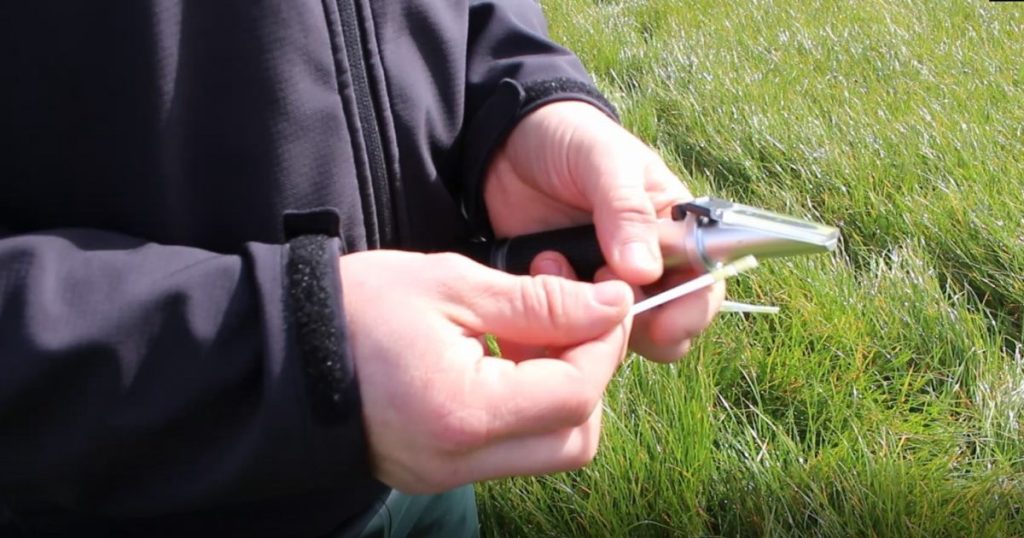Ensilability Testing (pre-mowing)
Silage quality is influenced heavily by grass conditions at cutting time. Grass silage samples can be tested prior to harvest and analysed for nitrate and sugar content to check whether the crop is suitable for ensiling.
Testing grass before cutting for silage is crucial and has a direct effect on silage quality. When ensiling silage the aim is to get the bacteria in the silage to convert the sugars available as quickly as possible to lactic acid to drop the pH of the silage to around 4, this is where the silage is stable. Farmers should target a High Sugar content and Low Nitrogen content when harvesting. The higher the sugar content the more food for the bacteria the quicker the pH drops. The target sugar content to ensure good fermentation is 3% or higher. Grass tested should have Nitrogen levels lower than 100g/Kg. This combination ensures good silage preservation, higher the intake potential and animal performance.
Early May silage has the highest dry matter digestibility (DMD) in combination with potentially the most difficult ensiling conditions. From early May silage DMD drops by roughly 3% per week. Time of day when cutting plays a huge factor in terms of Sugar content. Sugar contents in grass are highest around 4pm in the evening as the grass has received light/heat all day thus reducing water quantity in grass which will increase the concentration of Sugar content.
In good growing conditions grass typically utilises 2 units of Nitrogen per day but poor weather conditions have a negative impact on this, and Nitrogen uptake is slower, so if you applied 100 units per acre, it will take on average 50 days for this fertiliser to be used up. High Nitrate levels in grass are bad as they increase the buffering capacity making it more difficult to get the pH level down. When Nitrogen levels are high in the grass, it results in silage which doesn’t preserve as well as it needs to, and the quality of silage is also lower.
If your nitrate test reading is high, the most likely cause is that not enough time has elapsed from the spreading date.
A pre-ensilability test should be performed several days in advance of the intended cutting date, to allow time for additional N to grow out of grass and to give yourself a better chance of cutting during the right weather window.

SEVEN STEPS TO MAKING HIGH QUALITY SILAGE:
- The person filling and rolling the pit has the largest influence on silage quality.
- Ensure the pit is built from the base of the silage slab up, rather than from the back wall to the front, this ensures the loader operator shakes out the silage more evenly, compacts the pit more efficiently and reduces the amount of air captured in the pit.
- Minimise soil contamination by rising the mowing height slightly, this will increase stubble height allowing for more airflow under the sward thus improving wilt and minimising aerobic spoilage.
- Ideal silage dry matter is between 28% – 32% from a feed quality and preservation perspective.
- Cut in bright, sunny weather with cool nights to maximise the sugar content of grass, where conditions are not ideal, it is recommended to use a tedder to reduce wilting time and boost sugar concentration.
- Putting the cover on a silage pit is paramount to the overall silage quality, ideally use two covers and maintain an excellent seal on the edges and weigh down the top and sides well.
- Use Ecosyl (liquid or powder) silage additive to maximise the fermentation rate and compensate for the difficulties that can arise while making top quality silage. If weather or harvesting conditions are not ideal, Ecosyl is a perfect safety net for a wide range of scenarios.
get in touch
To find out more on ensilability testing or to arrange a test, please contact a member of the agri team
